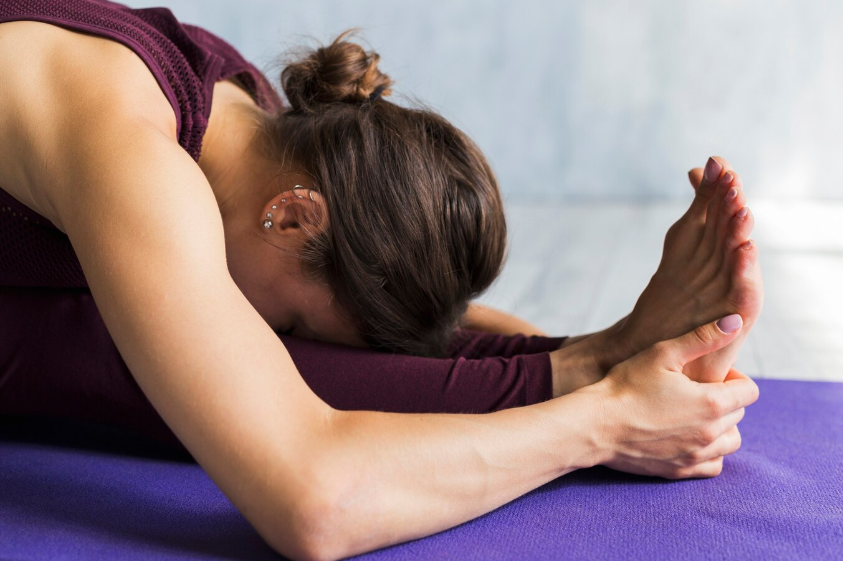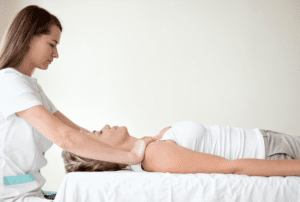Two common ways to improve movement and flexibility are to stretch and get a massage. Understanding the pros and cons of these methods is essential for anyone who needs to choose the best one for their movement needs, from players who want to improve their performance to people who want to get rid of daily aches and pains.
It’s essential to look closely at each modality’s effects, processes and uses when deciding between stretching and massage because the argument is still strong. Let’s understand massage vs stretching.
Difference Between Stretch vs Massage
Stretching
Stretching improves flexibility and range of motion by making muscles and connective parts longer on purpose. It’s possible to stretch actively by moving your body against an outside force, like your partner or a prop, or quietly by having an outside force, like a prop or your partner, help you stretch. Stretching can help lengthen muscles and make joints more mobile. There are different kinds of stretches, like static, dynamic, ballistic, and PNF stretches, and each has its benefits and uses.
The most common type of stretching is static stretching, which lasts between 15 and 30 seconds. Before being held in place, relax muscles, improve blood flow, and make you more flexible over time. Dynamic stretching involves moving different parts of your body.
Through their full range of motion, just like you would when you were doing the activity you’re about to do. It’s great for warming up before exercise because it gets your muscles moving and improves circulation without lowering your strength or power.
Benefits of Stretching Massage Therapy
Increased Flexibility
Regular stretching can slowly make muscles longer and joints more flexible, which can help you move around.
Injury Prevention
Keeping muscles and joints flexible is vital for preventing injuries. Strings and stretching are essential parts of injury prevention techniques.
Improving Athletic Performance
Being more flexible can improve athletic performance by giving you more range of motion, making it easier to execute your skills, and lowering the risk of muscle instability.
Relieves Pain
Stretching can ease muscle stress and pain caused by tight or stiff muscles or problems with posture.
Stress Reliever
By releasing endorphins and encouraging awareness, stretching can help you relax, lower your stress, and improve your general health.
Massage
To massage someone is to move the body’s soft parts to help them rest and improve blood flow. Swedish massage, deep tissue massage, sports massage, and trigger point treatment are all types of massage therapy. Each one focuses on different layers of muscles with varied levels of pressure and intensity to help with problems like knots, adhesions, or limited range of motion.
Swedish massage uses long, flowing strokes and pressing—and rolling motions to help people rest and feel less stressed. Deep tissue massage, on the other hand, targets chronic stress and muscle knots by applying more force to lower layers of muscle and collagen.
Sports massage is specially designed to meet the needs of players by helping them become more flexible and avoid injuries. They can heal faster by using different methods that are made for each sport or training routine.
Massage Therapy Benefits
Muscle Relaxation
Massage therapy can help loosen up tense and tense muscles, which can help you rest and ease muscle pain or stiffness.
Increased Circulation
Massage treatment increases circulation by increasing blood flow and lymphatic drainage. This helps nutrients get to tissues and speeds up the removal of waste from the metabolism, which in turn helps tissues heal and grow back.
Pain Management
Massage can help with severe back, neck, and headache pain by relaxing muscles, making joints more flexible, and releasing chemicals that relieve pain.
Stress Reduction
Massage calms the nervous system, which lowers cortisol levels and raises serotonin and dopamine levels, which makes you feel better.
Increased Flexibility
Massage treatment can make it much easier to move your joints and be more flexible by opening up tight muscles, breaking up adhesions, and gradually making tissues more stretchy over time. When it comes to mobility, what’s better: stretching or massage?
Both massage and stretching can greatly improve movement and flexibility, but which one works best for you depends on your tastes, goals, and circumstances.
What to Choose Deep Tissue Massage vs Stretching
That rests on each person’s wants, needs, and goals in the end. If you want to get the most out of both methods, you might want to add them to your health practice and alternate between massage treatment and stretching.
Regularly moving and taking care of yourself, like going to yoga classes or getting a therapeutic massage, can help improve your motion, lower your pain, and improve your general health over time. For the best stretch massage therapy, feel free to visit Spa Utopia.
FAQs
1. Which increases flexibility more: stretching or massage?
Massage and stretching both enhance flexibility, but in different ways. Stretching directly lengthens muscles and connective tissues and improves joint mobility. However, massage relieves muscle tension, adhesions, and stiffness, restoring flexibility. Use stretching and massage to improve mobility and flexibility for best results.
2. Can massage replace stretching before exercise?
Massage may increase blood flow and reduce muscular tension. It also relaxes muscles, but it can’t replace stretching as a pre-exercise warm-up. Dynamic stretching warms up muscles and improves joint mobility before physical exercise. However, adding massage to your warm-up helps relax muscles and improve workout preparedness.
3. How frequently should I stretch or massage for mobility?
Individual requirements, objectives, and lifestyle circumstances determine stretching and massage frequency. To maintain or develop flexibility, stretch essential muscle groups and joints regularly or monthly. Optimize mobility with dynamic stretches before exercise and static stretches after workouts or rest days. Massage frequency depends on activity level, recuperation requirements, and budget.
4. Can stretching and massage help arthritis and fibromyalgia patients move?
Stretching and massage may help arthritis and fibromyalgia patients with mobility concerns. Gentle stretching exercises customized to individual skills may improve joint mobility, stiffness, and arthritic discomfort. Massage reduces muscular tension, relaxes, and improves sleep quality, helping fibromyalgia symptoms. When addressing chronic mobility concerns, it’s essential to speak with a healthcare expert.





